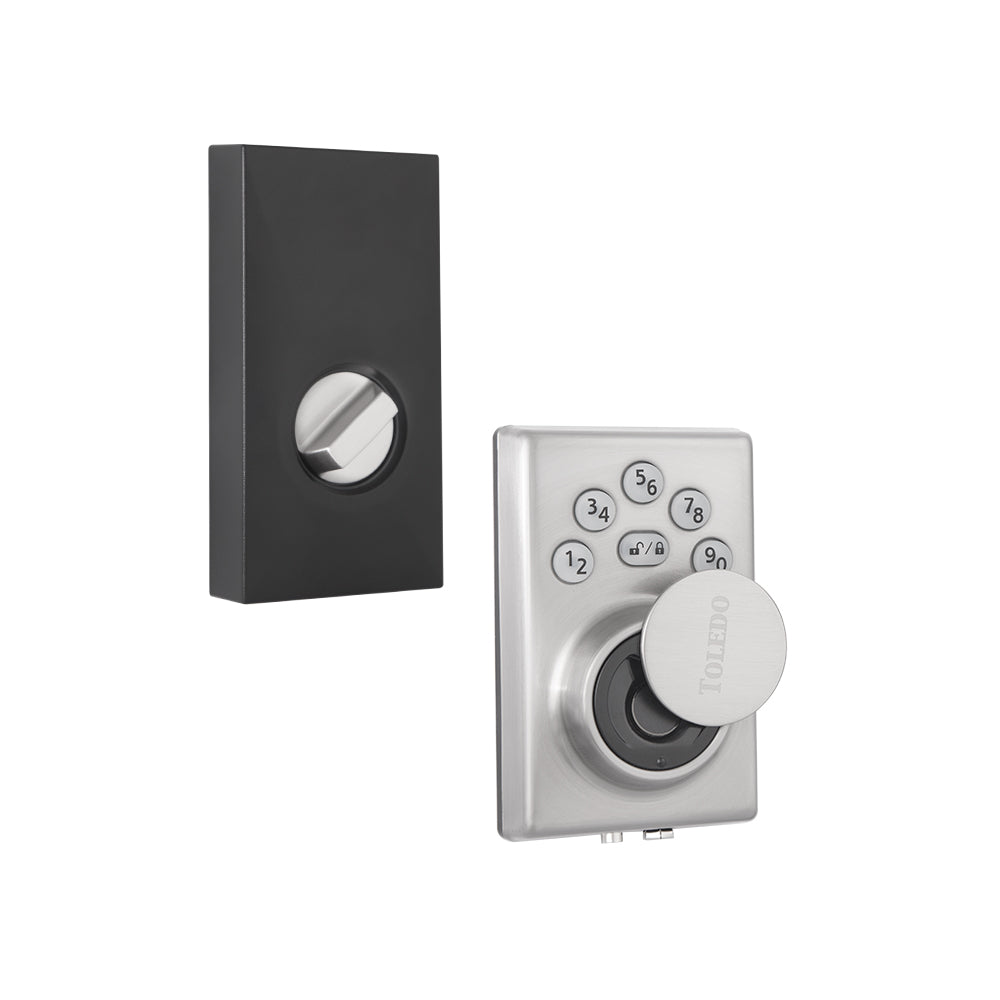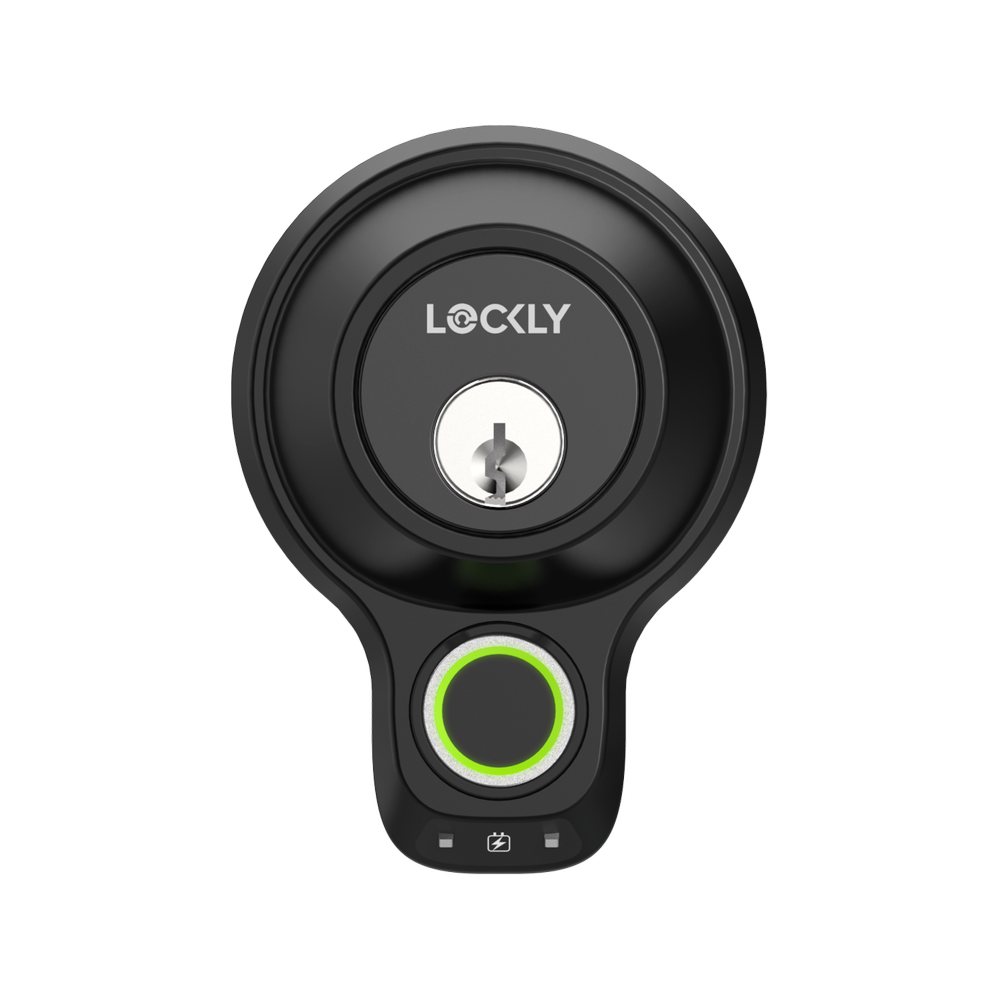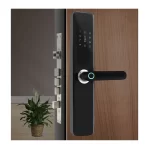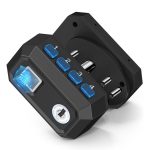Fingerprint deadbolt locks are increasingly popular among homeowners and businesses. This growth can be attributed to their security and convenience. In this article, we will explore the features, benefits, and potential drawbacks of fingerprint deadbolt locks. Understanding these elements will help you make a well-informed decision on whether this technology fits your needs.
What is a Fingerprint Deadbolt Lock?
Fingerprint deadbolt locks serve as high-tech security devices. They utilize biometric technology to recognize a user’s unique fingerprint. Unlike traditional keys, these locks provide enhanced security and ease of use. In this way, they eliminate the possibility of lost keys or forgotten combinations. Furthermore, the programming of these locks can typically accommodate multiple users. People can easily share access without exchanging physical keys.
Key Features of Fingerprint Deadbolt Locks
Fingerprint deadbolts come with several innovative features. One significant aspect is the ability to manage access. Many models let you add or remove users quickly. This is especially useful for households or businesses with frequent visitors. Additionally, some locks include backup access options, such as traditional keys or keypad entry. These features provide an extra layer of security.
Moreover, most fingerprint deadbolt locks come equipped with advanced security mechanisms. They commonly have anti-tampering technology. This means that attempts at forced entry will trigger alerts or render the lock inoperable. Such features reinforce the sense of security that these locks offer.
How Do Fingerprint Deadbolt Locks Work?
The fundamental operation of a fingerprint deadbolt lock involves scanning and matching fingerprints. When you first receive the lock, you must program it with your fingerprints. This process often requires scanning each fingerprint multiple times. Once stored, the lock will compare any new scan to the saved fingerprints. If there’s a match, the lock will engage, granting access. In the case of an unsuccessful scan, the lock remains in a locked position.
Additionally, many modern models include specialized sensors. These sensors can differentiate between genuine fingerprints and replicas, thereby enhancing security. They also have memory storage that retains user fingerprints, even during power outages. This means the lock will still function as intended, providing peace of mind.

Benefits of Using Fingerprint Deadbolt Locks
Fingerprint deadbolt locks offer numerous advantages to users. One key benefit is convenience. You no longer have to fumble through your pockets for keys. Instead, you simply scan your fingerprint for access. This feature can be particularly helpful when your hands are full.
Enhanced Security Features
The biometric nature of fingerprint locks significantly reduces the risk of unauthorized access. Traditional keys can easily be copied or stolen. However, replicating a fingerprint is much more complex. This added security can deter potential intruders. In a world where home invasions are prevalent, many homeowners are opting for this technology.
Moreover, some advanced fingerprint locks offer real-time alerts. Such locks can notify users on their smartphones when unauthorized access attempts occur. This feature allows you to be proactive in securing your home or business. Knowing when an intrusion attempt happens can be crucial.
User-Friendly Nature
Another notable benefit is the user-friendly design of these locks. Many models offer a simple interface for programming. This means you don’t need to be technologically savvy to manage it effectively. Additionally, the simple act of pressing your finger to a scanner is easier than entering a code. This convenience is particularly appealing to children and elderly family members.
Moreover, many fingerprint deadbolts come with intuitive light indicators. These lights guide you through the scanning process, making it easy to use. Such features can make high-tech security accessible to everyone in your household.
Potential Drawbacks of Fingerprint Deadbolt Locks
While fingerprint deadbolt locks come with many benefits, they also have some drawbacks. One major concern is their reliance on technology. Like any electronic device, these locks can malfunction. Issues could arise from dead batteries or software glitches. In such cases, you may find yourself locked out.
Battery Dependency
Most fingerprint deadbolt locks operate on batteries, which can be a double-edged sword. While this design eliminates the need for wiring, it also necessitates regular battery checks. Some locks come with low-battery alerts, but others do not. If not monitored, you could find your system unresponsive at critical moments.
Furthermore, if you do get locked out due to a dead battery, accessing the interior can become a hassle. Although many models have a mechanical key backup, this defeats the purpose of opting for a keyless entry system. Always having spare batteries can alleviate some stress.
Vulnerability to Environmental Factors
Another potential drawback is the sensitivity of biometric scanners to environmental conditions. Dust, moisture, or dirt on the scanner can interfere with the locking mechanism. High humidity or extreme temperatures can also affect performance. For example, scanners may struggle in damp conditions, leading to incorrect reads.
Moreover, if maintenance is neglected, the effectiveness of the lock can diminish. Regular cleaning of the scanner is essential for optimal performance. Failure to do so can lead you to experience frustration when accessing your home.

Choosing the Right Fingerprint Deadbolt Lock
Selecting the perfect fingerprint deadbolt lock for your needs requires careful evaluation. Various brands and models are available, all with unique features. To make an informed choice, it is crucial to consider your specific requirements.
Assessing Your Needs
Start by assessing what you need from a fingerprint deadbolt lock. For example, determine how many users need access. If you have a large family or staff, opt for a model that supports multiple fingerprints. Additionally, think about any special features you may desire. Do you want smartphone alerts or backup key options?
Furthermore, consider how the lock will fit into your lifestyle. Some locks may be more suitable for residential settings, while others are designed for commercial use. Knowing your environment allows you to narrow your options.
Reviewing Customer Feedback
Once you have a shortlist, reviewing customer feedback becomes essential. Modern consumers often post honest reviews online. Checking user experiences can provide insights into real-world performance. Pay attention to aspects such as ease of installation, reliability, and customer service.
Moreover, consider the warranty and support options provided by the manufacturer. Knowing you have assistance if issues arise can offer peace of mind. The satisfaction of existing customers often translates to the overall quality of the lock.
Installation and Maintenance of Fingerprint Deadbolt Locks
Installing a fingerprint deadbolt lock might seem daunting, but it’s often manageable. Many models come with detailed instructions, simplifying the task. Nonetheless, some homeowners might prefer hiring a professional to ensure proper installation.
DIY Installation Tips
If you opt for a DIY approach, start by gathering the required tools. Have a screwdriver and a measuring tape on hand. Begin by removing your existing deadbolt, making note of how it is installed. This ensures you replicate the process accurately.
Next, follow the manufacturer’s instructions closely. Be sure to calibrate the lock properly. This often involves scanning your fingerprint multiple times. Pay attention to the specifics of the programming process, as each model can differ slightly.
Ensuring Proper Maintenance
After installation, regular maintenance is crucial for optimal performance. Periodically inspect the lock for dust or grime. A clean fingerprint scanner functions more effectively. Additionally, keep an eye on battery life; replace batteries promptly to avoid unforeseen issues.
Furthermore, reviewing the user manual periodically is beneficial. This will keep you informed of best practices and troubleshooting tips. Staying proactive will help prevent any frustration down the road.

Conclusion: The Future of Fingerprint Deadbolt Locks
Fingerprint deadbolt locks are revolutionizing security systems. With their ease of use, enhanced safety features, and advanced technology, they represent a smart choice for many. However, it is essential to weigh the advantages against potential drawbacks. Understanding your own needs and preferences is critical.
The Evolving Landscape of Security
As technology continues to evolve, so do the features available in fingerprint locks. Manufacturers are constantly updating software and improving hardware designs. Newer models may incorporate additional technologies, such as facial recognition. This can create even more secure and convenient systems for access control.
The landscape of home and business security is changing rapidly. As concerns about safety rise, investing in innovative solutions is necessary. Fingerprint deadbolt locks offer a practical blend of sophistication and ease of use.
Final Thoughts
In conclusion, fingerprint deadbolt locks represent an exciting development in security. They provide a convenient means to safeguard your property without the need for traditional keys. Always conduct thorough research before making a purchase. A well-chosen fingerprint lock can enhance your peace of mind today and in the future.


